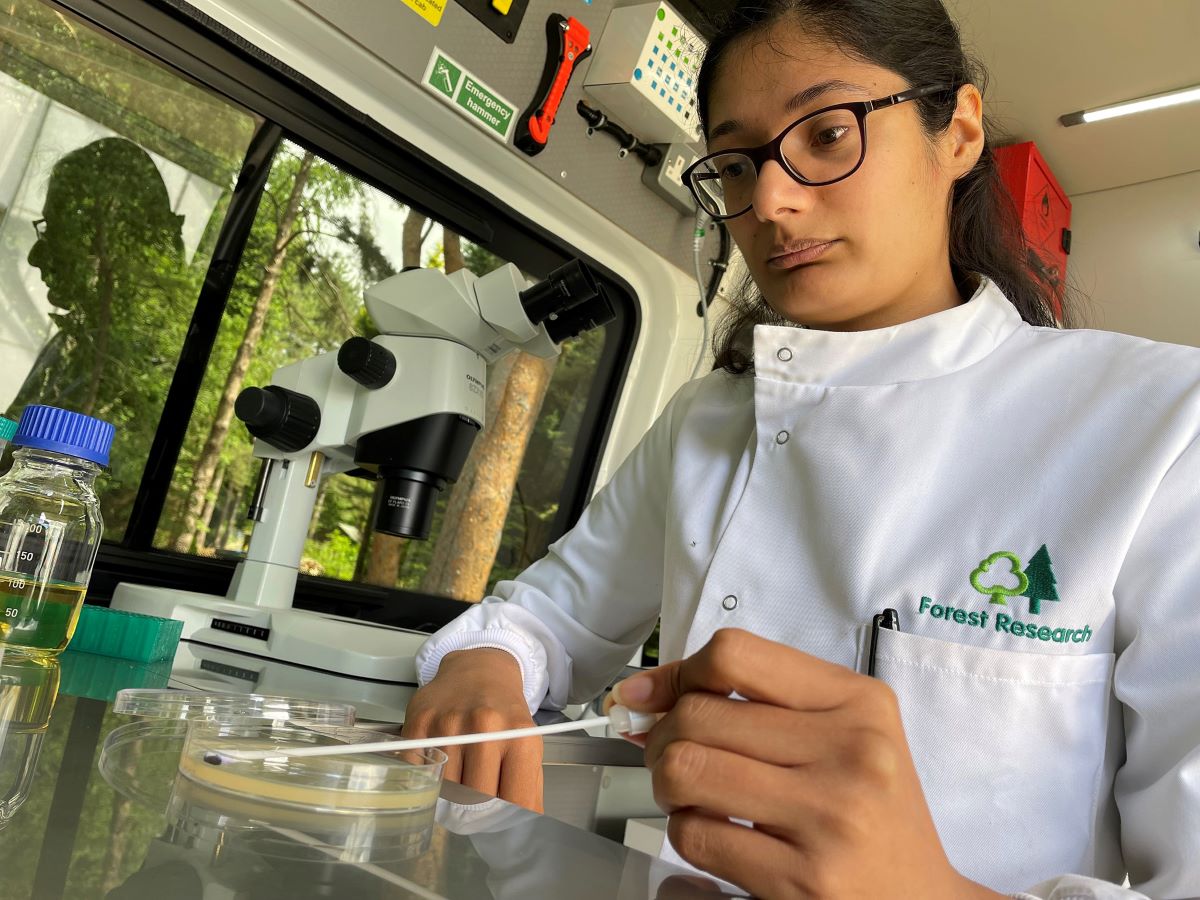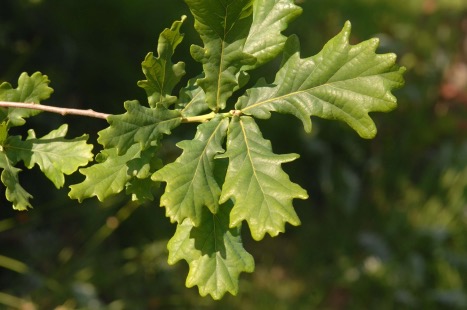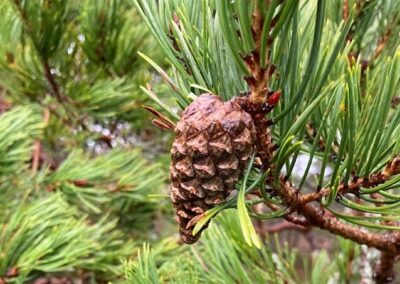Assessing genetic susceptibility to acute oak decline
Project leads Prof Richard Buggs I Royal Botanic Gardens, Kew; Dr Sandra Denman | Forest Research
Lead organisation Royal Botanic Gardens, Kew
Collaborators Dr Nathan Brown | Forest Research; Dr Rômulo Carleial | Royal Botanic Gardens, Kew; Prof Richard Nichols | Queen Mary University of London
Project status Complete (April 2022 – March 2025)
Project funding £438,704
Research outcome Adaptation
Context
Acute oak decline (AOD) is a complex syndrome affecting thousands of oaks (Quercus) in the UK, many of which die each year. AOD has been associated with multiple risk factors, some of which are expected to intensify with climate change. Over the past four years, we have sequenced the whole genomes of 1,561 individual oak trees sampled across over 60 sites with generous funding from Defra through Action Oak and the Centre for Forest Protection pilot year. Initial studies analysed oak population structure and AOD-related microbiome in the foliage.
In this final stage of the project we will estimate how much susceptibility to AOD is inherited, look for genes that may confer resistance and predict individuals most likely to be resistant. We will also use genomic data to look for associations with traits of interest to foresters, and combine our data with data from Europe to predict environmental adaptation in oaks.
Research aims and objectives
Aims:
- Estimate the heritability of susceptibility of oak trees to AOD, and identify parts of the genome associated with AOD resistance or susceptibility.
- Find possible parts of the genome related to phenotypes of interest to foresters and ecologists.
- Find parts of the genome related to environmental variables across UK and Europe oak populations.
Objectives:
In this project we will do the following:
- Tissue and phenotype collection: Forest Research (FR) will select 400 trees, take swabs from AOD lesions, take leaf samples and phenotype the trees. FR will analyse swab samples to confirm AOD infection.
- Genome sequencing: Kew will arrange the extraction of DNA from the samples and the whole genome re-sequencing of the DNA. This novel data will be made available on a public repository. Together with data already generated we will have approx. 30TB of total oak genomic data for around 2000 individuals. We will align raw reads to the oak genome and call genome-wide variants.
- GWAS and genome prediction: We will carry out Genome Wide Association Studies (GWAS) to test for associations between genome-wide variants and presence/absence of AOD. If this evidence indicates a genetic component to susceptibility, we will carry out ‘genomic prediction’. This is a way of calculating breeding values for individual trees and can identify oak trees that should be used for future plantings. GWAS will also be carried out for useful phenotypic traits.
- Genome-environment association: Additionally, we will carry out genome-environment association (GEA) studies, which look for associations between points on the genome and environmental variables. To augment our dataset, we will download published datasets from Europe.
Expected outcomes:
- This study should produce of one of the largest genomic and phenotypic studies ever conducted on forest trees and will result in policy-relevant journal papers quantifying the genetic component of susceptibility to AOD, identifying parts of the genome associated with resistance, environmental adaptation and other traits.
- It could also produce breeding values that inform future selections for planting and breeding programmes.

Larval galleries of the beetle Agrilus biguttatus under the bark of an oak tree affected by acute oak decline.
Glossary & Key Terms
Acute oak decline (AOD)
Acute oak decline is an emerging disease of oak trees (trees in the Quercus genus) which was first observed in the UK late in the 20th century. It can kill oak trees within four to six years of the onset of symptoms.
The disease is found mostly on mature oak trees, but younger trees can also be affected. It is caused by multiple agents, especially bacteria, and thousands of trees are affected. For infection to occur, it is likely the trees need to be weakened (predisposed) by certain factors, especially environmental factors. For more information, see Acute oak decline – Forest Research.
Genome
The complete set of genetic material in an organism. It includes all of the organism’s DNA, which contains the instructions needed for growth, development, functioning, and reproduction.
Genome (re)sequencing
The process of determining the complete DNA sequence of a tree’s genome. This includes identifying the order of all the nucleotides (A, T, C, and G) that make up its genetic material.
Genome-environment association (GEA)
The statistical relationship between genetic variations (genotypes) and environmental factors. It is a method used to study how organisms adapt to their local environments by identifying specific genes that are associated with particular environmental conditions.
Genome-wide association studies (GWAS)
A research method used to identify specific regions of a genome, called loci, which are statistically associated with traits such as resistance to disease.
Genome-wide variants
Genetic differences that are identified across the entire genome of an individual organism.
Lesions
A localised area of damaged or abnormal tissue, often appearing as a sunken, discoloured, or dark area on the bark, branches, or leaves. These lesions can be caused by various factors like fungal infections, bacterial diseases, or even physical wounds.
Microbiome
The microorganisms, including bacteria, fungi, and viruses, which live in a particular environment.
Oak (Quercus)
Oak trees are a group of trees and shrubs belonging to the genus Quercus within the beech family. They are known for their distinctive lobed leaves, hard wood, and characteristic acorns. There are around 500 different species of oak, found in the Northern Hemisphere, and they can be either deciduous or evergreen.
There are two native oak species in the UK: pedunculate oak (Quercus robur) and sessile oak (Quercus petraea), and three non-native species: turkey oak (Quercus cerris), holm oak (Quercus ilex), cork oak (Quercus suber). For more information, see Oak Trees – Forest Research.
Phenotype
Observable characteristics, such as height, biomass, leaf shape and so on.
Share this project on social media
Related Projects
Our Partners
Social media
Explore
Newsletter
Contact
© 2022 Centre for Forest Protection. All rights reserved.


